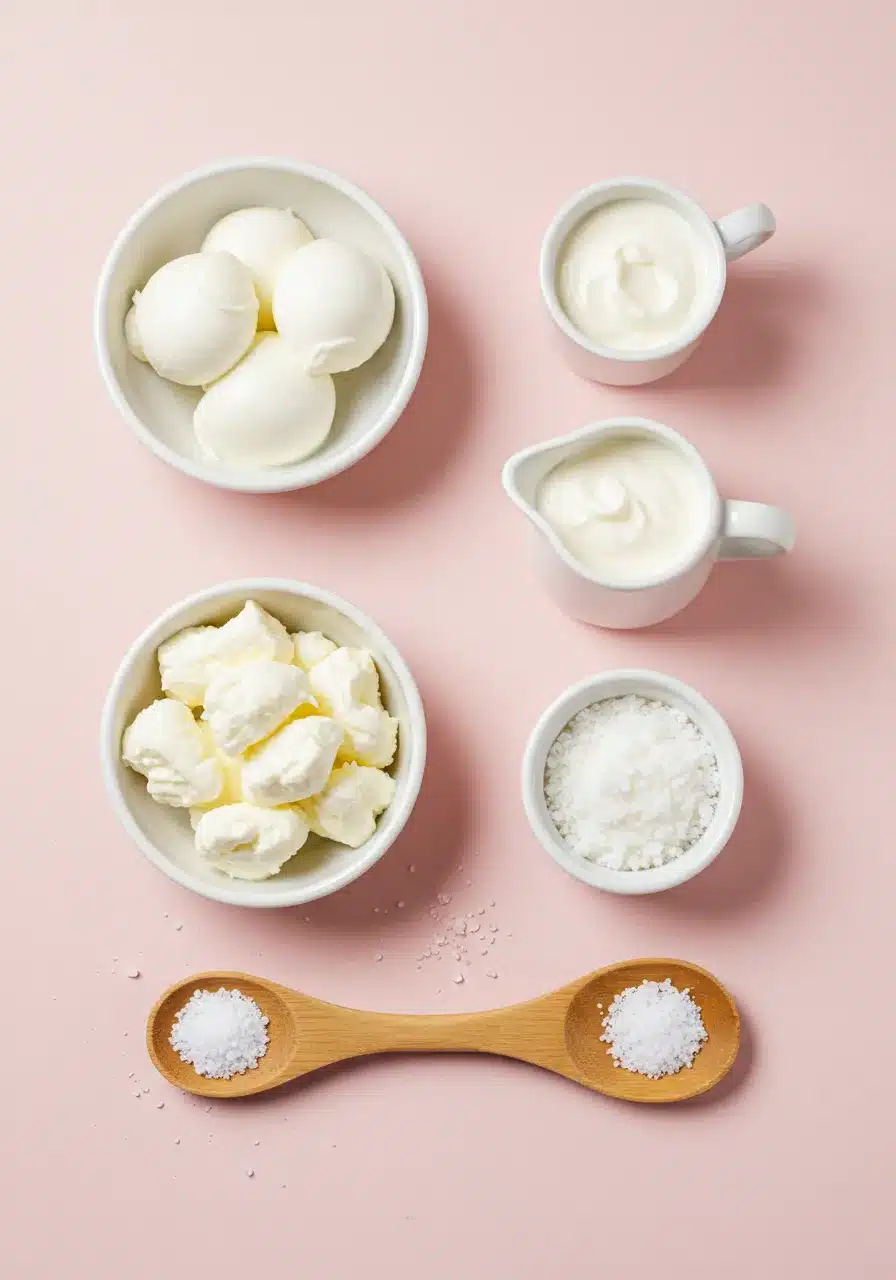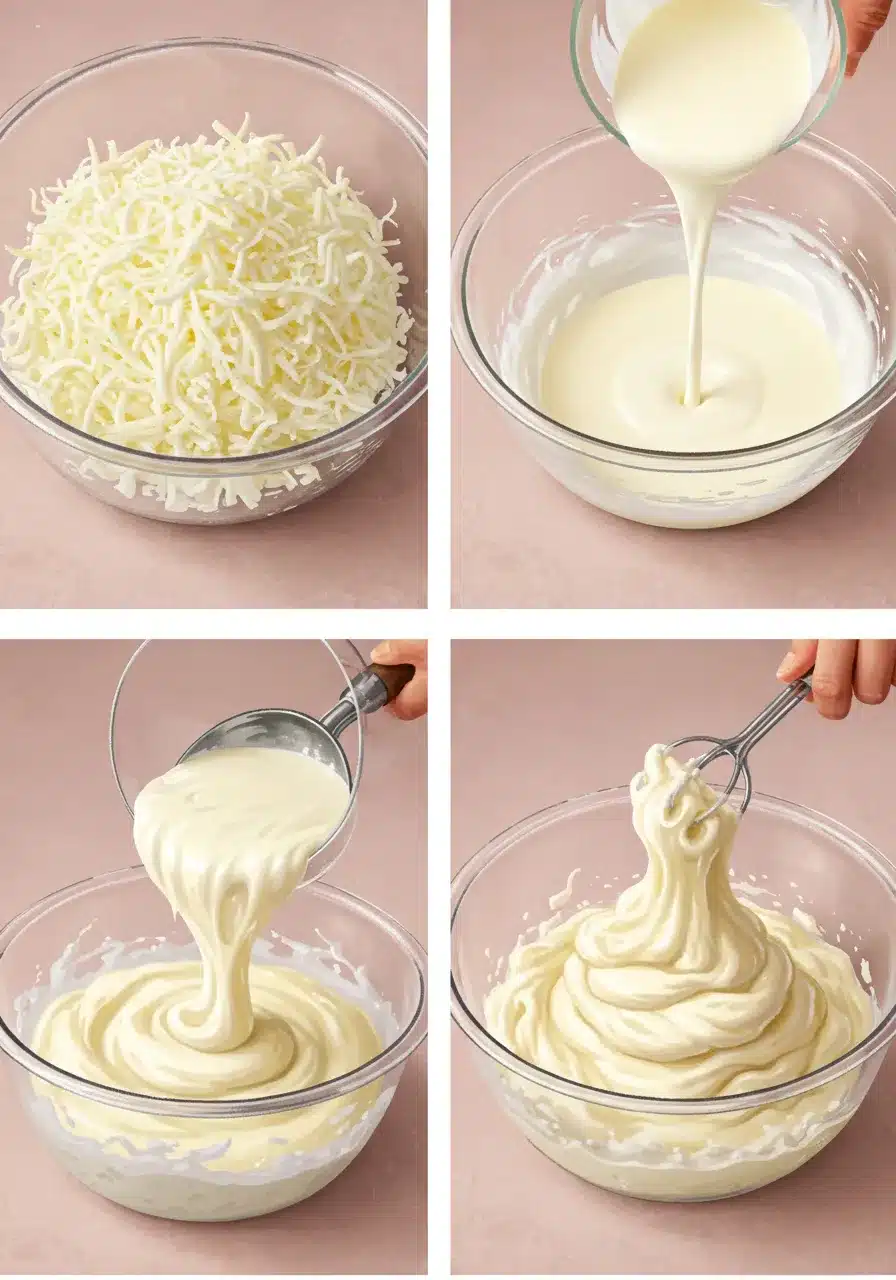Welcome to Recipes2Gather, where we bring people together, one recipe at a time. Today, we’re diving into a cheese so creamy, so silky, it practically whispers indulgence with every spoonful. Say hello to stracciatella cheese—not the ice cream or the soup, but the rich, creamy kind you’ll want on everything. This luxurious dairy gem is the heart of burrata, known for its tender shreds of fresh mozzarella soaked in sweet cream.
Whether you’re layering it over crostini, folding it into pasta, or simply scooping it onto warm bread, stracciatella is about turning simple dishes into something special. The best part? It’s surprisingly approachable for everyday meals. Once you’ve tried it, you’ll wonder how your kitchen lived without it.
Let’s explore what makes stracciatella cheese so irresistible and how to use it in ways that bring both comfort and culinary flair to your table.
Key Benefits of Stracciatella Cheese
Stracciatella cheese isn’t just a foodie trend—it’s a flavorful, versatile ingredient that delivers both indulgence and nutrition. Let’s talk about why this cheese absolutely belongs in your fridge:
- Unmatched Creaminess: This cheese has a soft, stringy texture soaked in cream that adds luscious richness to any dish. It melts easily and spreads like a dream, perfect for anything from crusty bread to delicate pasta.
- Culinary Flexibility: Use it in hot or cold dishes. Dollop it onto roasted veggies, layer into a grilled sandwich, or spoon over pizza fresh from the oven for an instant upgrade.
- Nutritional Boost: It’s a source of protein, calcium, and healthy fats. Combine with tomatoes or leafy greens for a balanced bite that’s delicious and satisfying.
- Entertaining Essential: Elevate your appetizer game with a spoonful of stracciatella over crostini, drizzled with olive oil and topped with herbs or roasted fruit.
If you’re already a fan of cheese spreads or dips, you’ll love our rich and tangy cream cheese filling or these goat cheese appetizers for more creamy inspiration.
Ingredients for Stracciatella Cheese
Stracciatella cheese is made from just a few high-quality ingredients, and that’s what makes it so special. Here’s what goes into it:

- Start with fresh mozzarella curds—just pull them apart into thin, stringy pieces. The fresher the curds, the better the stracciatella.
- Heavy Cream: Poured over the shreds to create the signature creamy texture. Look for high-fat, non-ultra-pasteurized cream for best results.
- Salt: A small pinch enhances the flavor and balances the sweetness of the cream.
When purchasing, opt for local dairy shops or artisanal brands for the freshest taste. Or, try making your own at home with simple tools. You can even pair it with our cottage cheese flatbread for a satisfying, wholesome meal.
Step-by-Step Instructions for Stracciatella Cheese
If you’re curious about making stracciatella at home, it’s surprisingly doable. Here’s how to craft your own small batch in just 15 minutes:

- Gather Ingredients: You’ll need about 1 cup of mozzarella curds and ½ cup of heavy cream, plus salt to taste.
- Shred the Curds: Using clean hands or a fork, pull the curds into fine, thin shreds.
- Mix with Cream: Place shredded curds in a bowl and pour the cream over them. Give it a light mix until the curds and cream come together smoothly.
- Add Salt: A pinch of sea salt helps draw out the natural flavor.
- Let Rest: Cover and refrigerate for 30 minutes to allow the textures to meld. Then, serve chilled or room temperature.
Enjoy it right away, or pop it in a sealed container and keep it in the fridge for up to two days. For a delicious serving idea, check out our burrata and stracciatella crostini.
Pro Tips and Variations for Stracciatella Cheese
Get creative in the kitchen with these tasty ideas and expert tips:
- Make It Garlic-Infused: Stir in roasted garlic or garlic oil for a savory twist.
- Add Fresh Herbs: Basil, thyme, and oregano pair wonderfully with the creamy base.
- Try a sweet twist—add a touch of honey and serve it with juicy berries or ripe figs for a treat that feels like dessert.
- Try Savory Combos:
- Spoon over roasted eggplant
- Pair with pepper jack cheese for a spicy contrast
- Layer in a grilled panini with tomato and arugula
This cheese is endlessly versatile. And if you love creamy, protein-rich ideas, don’t miss our protein mac and cheese that reinvents comfort food with a healthy edge.
Serving Suggestions for Stracciatella Cheese
Stracciatella is a joy to serve. Here’s how to make it the highlight of your next meal:
- Crostini or Bruschetta: Top with roasted tomatoes, balsamic glaze, or fruit preserves.
- Salads: Try spooning a bit over arugula and grilled peach salad—it goes great with a bright lemon dressing.
- Pizza Finisher: Add right after baking to keep it soft and creamy.
- Soup Garnish: Use it like a swirl of cream on tomato or butternut squash soup.
- Cheese Boards: Serve in a small bowl with a spoon, alongside crackers and nuts.
Want more pairing ideas? Explore our port wine cheese spread or dive into white American cheese for mild and melty options.
Trusted Resources for Stracciatella Cheese
To deepen your understanding and appreciation of stracciatella, we’ve gathered some expert resources from trusted culinary and cheese authorities:
- Mozzarella di Bufala and Stracciatella di Bufala – Oldways: Learn how stracciatella di bufala fits into traditional Italian cheese-making practices and why it’s cherished in Mediterranean diets.
- Stracciatella: One Name, Three Different Foods – La Cucina Italiana: Explore the fascinating origins of the name “stracciatella” and discover the three delicious Italian foods that share this name.
- Calabro Stracciatella Cheese – Murray’s Cheese: Dive into a detailed product description and tasting notes from one of the leading cheese retailers in the U.S.
- Stracciatella Gelato Recipe – Serious Eats: Though not about cheese, this classic gelato recipe showcases another form of “stracciatella”—sweet and creamy with delightful chocolate shavings.
Conclusion
Stracciatella isn’t just something you spoon on top—it’s the kind of cheese that turns any dish into something unforgettable. Whether you’re hosting brunch, planning a date-night dinner, or simply craving something rich and satisfying, this cheese fits the bill. It packs a punch of flavor and style, all without making you spend hours in the kitchen.
And with just a few ingredients, it turns everyday recipes into gourmet creations. We hope this guide gives you the confidence to bring stracciatella into your kitchen and your heart. For more cheese love, don’t miss our playful yet classic cheese crackers.
Print
Stracciatella Cheese: Why You’ll Love It
- Total Time: 10 minutes
- Yield: 1 ½ cups
- Diet: Vegetarian
Description
A creamy delight with endless possibilities, stracciatella cheese brings gourmet flavor and comfort to your everyday meals with ease.
Ingredients
- 1 cup mozzarella curds, shredded
- ½ cup heavy cream
- Pinch of salt

Instructions
- Shred Curds: Pull fresh mozzarella curds into fine strands.
- Combine with Cream: Stir in the cream gently until well coated.
- Season: Add a pinch of salt to taste.
- Rest and Serve: Refrigerate for 30 minutes before serving.

Notes
- Add garlic or herbs for extra flavor.
- Use in crostini, salads, or pasta.
- Prep Time: 10 minutes
- Cook Time: 0 minutes
- Category: Appetizer
- Method: Mixing
- Cuisine: Italian
FAQs About Stracciatella Cheese
Not exactly. Stracciatella is the creamy, stringy filling found inside burrata. While burrata includes an outer shell of mozzarella wrapped around stracciatella, the two are not interchangeable. Burrata is a complete cheese product, whereas stracciatella refers only to the soft, shredded cheese mixed with cream.
Stracciatella is a fresh Italian cheese made from shreds of mozzarella curd mixed with rich cream. It has a soft, stringy texture and a delicate, milky flavor. This cheese is often used as a filling or topping and is best served fresh.
Stracciatella is similar in texture and flavor to burrata (its parent cheese), but it also resembles fresh mozzarella and cream cheese in terms of softness and creaminess. Some compare its spreadable texture to ricotta, although stracciatella is stringier and more luxurious.
Stracciatella is rich in calcium and protein, but also contains a significant amount of fat due to the added cream. It can be part of a balanced diet when enjoyed in moderation, especially when paired with fresh vegetables or whole grains.

